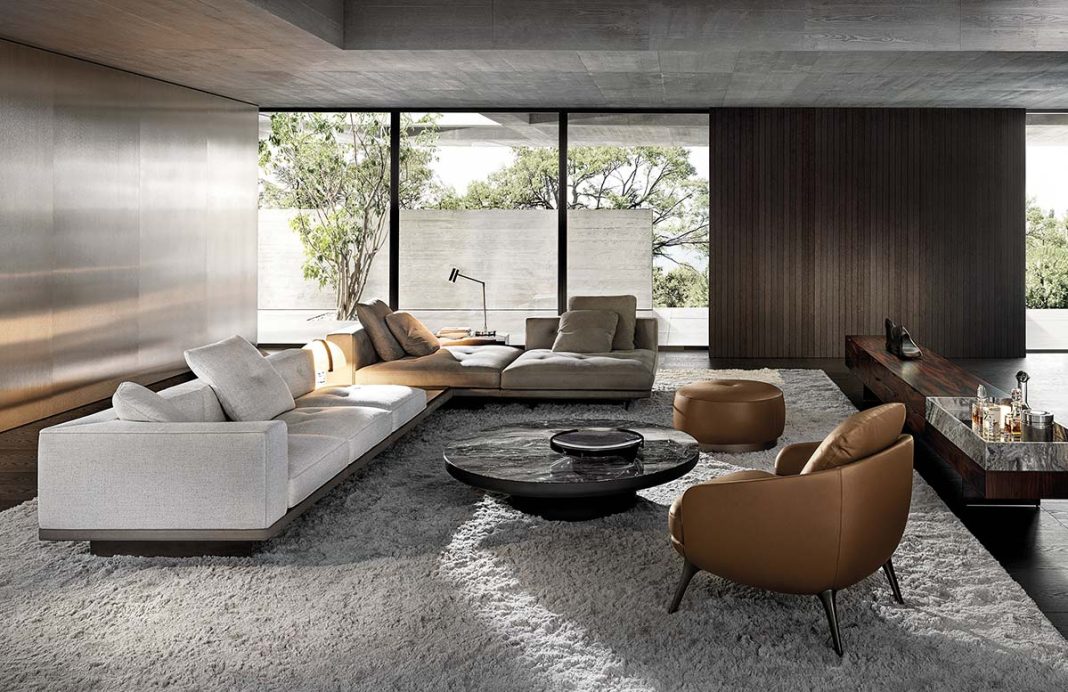The company celebrates its 75th anniversary with the 2023 Collection, which conveys an unmistakable, elegant and timeless style in which craftsmanship and industry are perfectly balanced. In a world where technological advances have speeded up production processes, “made and finished by hand” continues to represent an important value for Minotti. The family company based in Meda believes in the importance of craftsmanship and offers the market collections of furnishings in which attention to detail reaches such high levels that only expert artisans can complete the manufacture. This is the background of the 2023 Collection, coordinated by Rodolfo Dordoni – prematurely passed away last August – with Minotti Studio, to celebrate an important milestone for the company through a heterogeneous, unconventional range of products, in a perfect balance between classic and contemporary, relying on leading names in contemporary design such as Dordoni himself, Marcio Kogan / studio mk27, Nendo, GamFratesi, Inoda+Sveje and Gordon Guillaumier.
Among the new additions to the 2023 Collection, the airy and modern Dylan modular seating system, designed by Rodolfo Dordoni, stands out: it emerges for its refined volumes, which can be combined to create three variants capable of responding to different areas of taste and as many ways of experiencing the domestic and hospitality space. A design in perfect balance between essentiality of design and density of detail that combines light aesthetics with high quality comfort. In the version with a suspended base raised 13.5 cm from the floor, thanks to thin bronze or pewter-coloured extruded aluminium blades, Dylan is suited to a more contemporary style, but at the same time very attentive to couturier details.

Dylan Small by Minotti, design Rodolfo Dordoni

Dylan Low by Minotti, design Rodolfo Dordoni
The Dylan Small version takes up the same aesthetics, but with a more compact depth, designed to bring the same taste of haute couture to smaller domestic environments or hospitality spaces. Dylan Low, on the other hand, stands just 7.5 cm off the ground and expresses a more classic and traditional personality, in line with a formal aesthetic taste.
The fil rouge that binds the three different types is represented by the seat and back cushions, punctuated by soft, couture-inspired stitching, which make this system a timeless classic, albeit with unusual and contemporary modularity. The rigorous forms of the Dylan system, however, go beyond the stitching of the cushions to become volumes in which the geometries become sinuous and enveloping, thanks to the soft curves of the backrest and armrest that create a satisfying sense of welcome. Organic lines and solid volumes characterise the pieces of the new collection, which are able to embrace different stylistic tastes, even on a dimensional scale and usability in more intimate spaces. With the 2023 Collection, Minotti looks at its history and then declines it into the new, creating a collection that is as capable of reassuring as it is of surprising.
Among the new additions to the 2023 Collection, a new enveloping sofa, a swivel armchair with armrests and a footstool expand the Sendai seating family that also extends to an outdoor version with the new Sendai Cord Outdoor armchairs, designed by the Inoda+Sveje studio, formed by Kyoko Inoda, born in Osaka in 1971, and Nils Sveje, born in Denmark in 1969. The new elements maintain unchanged the elegant aerial figure that characterises the original series, an expression of a new language of living space, both in residential and hospitality contexts. The result of skilful cabinet-making skills, the slender, polished legs of the sofa, which support the renewed, ample size of the upholstered volume, create a light rhythm of vertical lines.
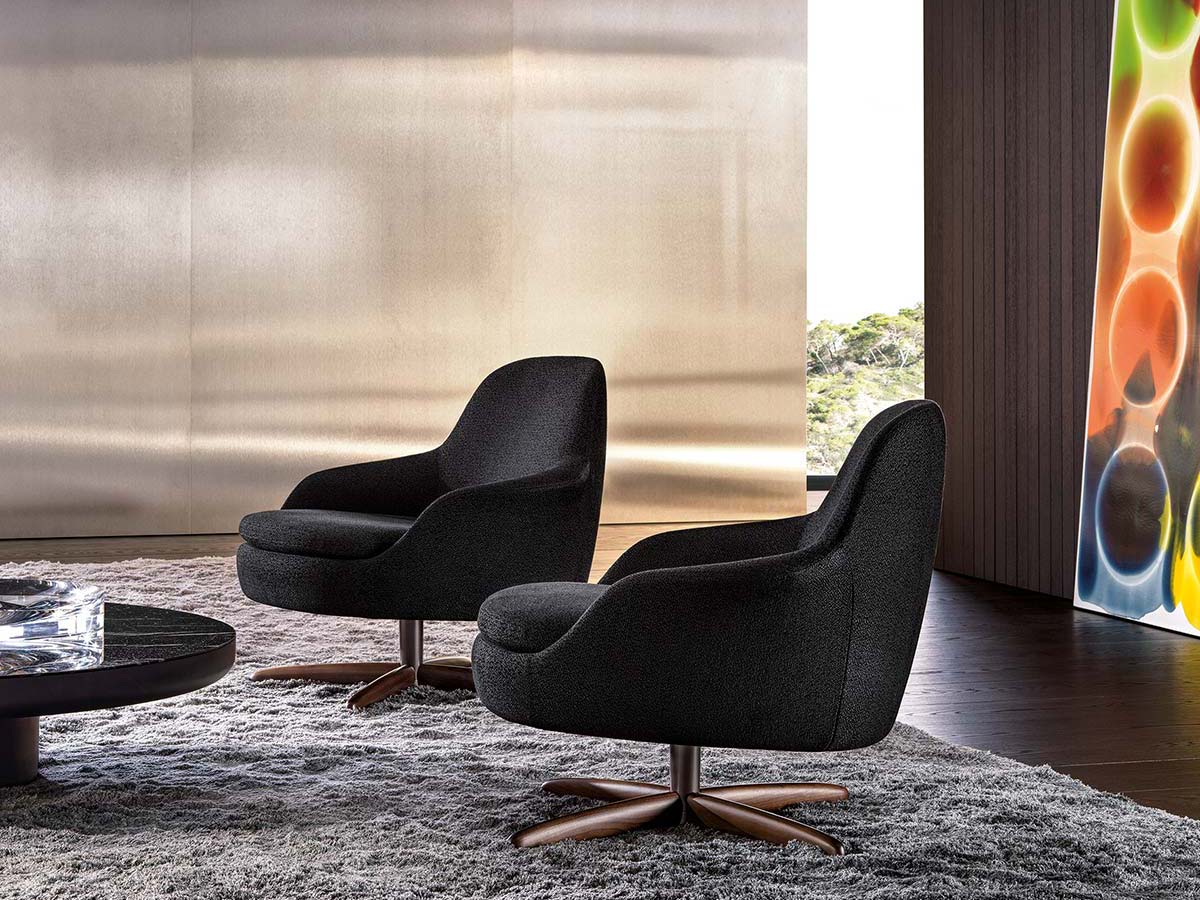
Sendai by Minotti, design Inoda+Sveje
The upholstered shell of the Sendai armchair – which rests on a 360 degree swivel base with return – also stems from the desire for a larger seat with a higher backrest and armrests, which ensure a satisfying sensation of relaxation even when combined with the footrest.
The light and sophisticated trait of the Italian-Danish studio GamFratesi, founded by Stine Gam and Enrico Fratesi, can be found in the Raphael collection, which consists of three sofa variants, four types of armchairs, two dining armchairs and two footstools characterised by organic shapes, generous proportions and refined tailoring.
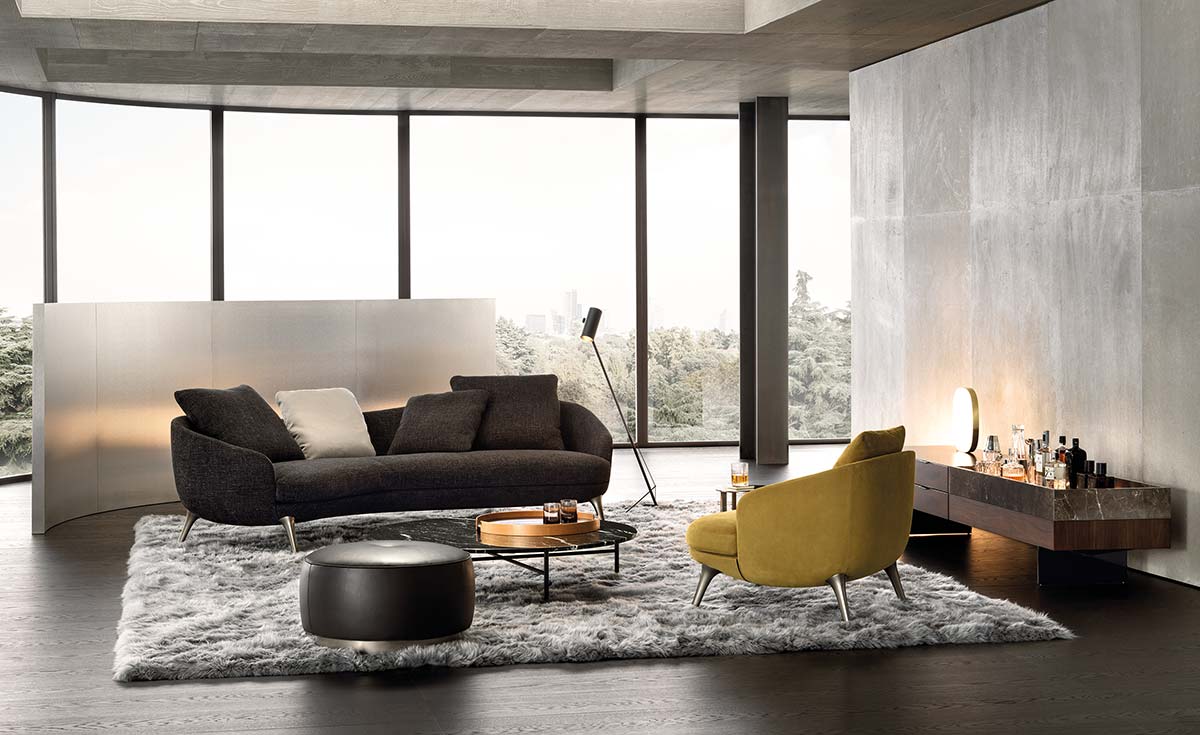
Raphael by Minotti, design GamFratesi
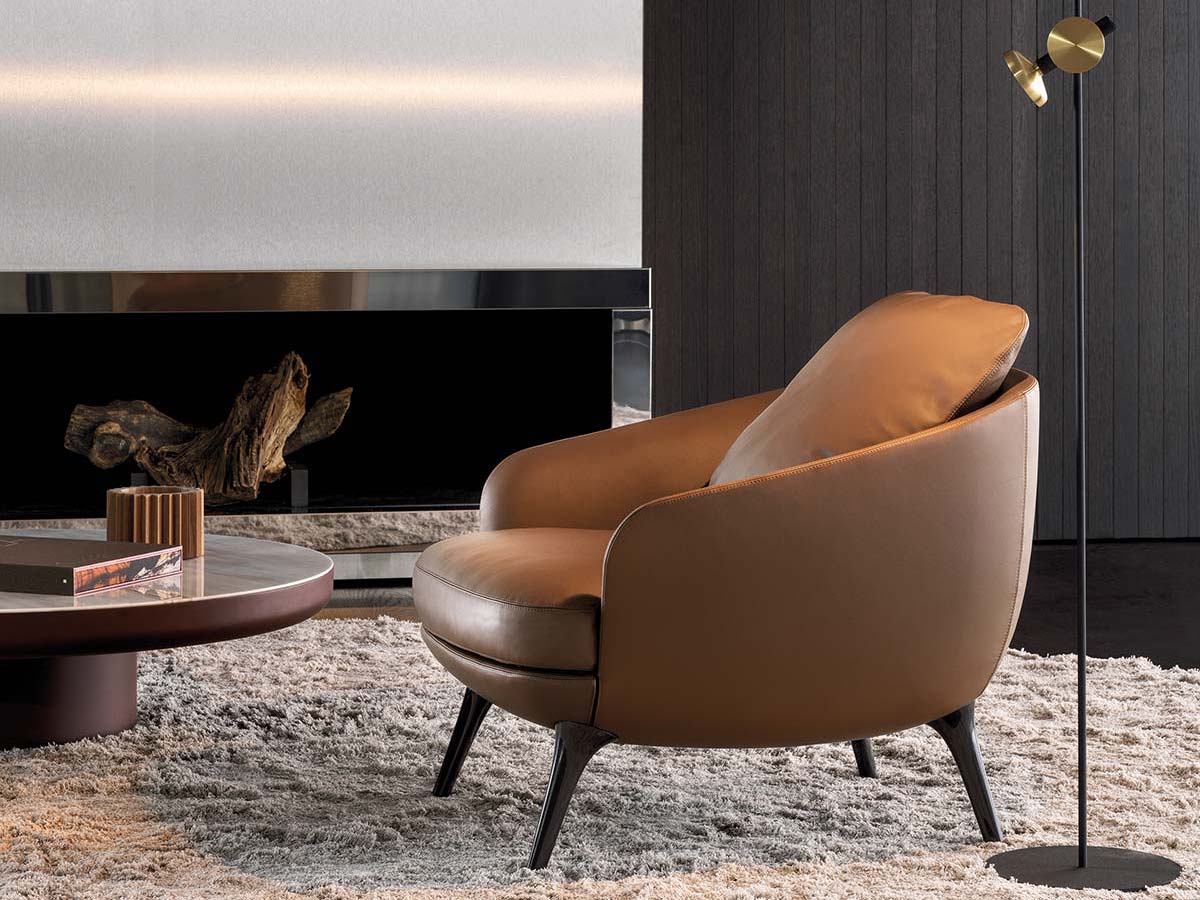
Raphael by Minotti, design GamFratesi
Able to become protagonists of the space, expressing the same comfort as traditional modular systems, the elements are designed to meet the different situations of everyday life: from hospitality to more intimate domestic situations, even in smaller domestic contexts. Raphael has a floor-standing with feet of modern character made of die-cast bronze or polished pewter aluminium or liquorice-stained ash, the design of which adapts to the morphology of the seats.
Three variants for the Raphael sofa: linear, semi-curved and asymmetrical semi-curved, the latter animated by the sinuous lines of the backrest, punctuated by a soft change of heights. Two versions, on the other hand, for the armchair, proposed not only in the more generous model, but also in the smaller version and in the dining version, available both fixed, with legs in liquorice-coloured ash wood, and swivelling on a four-spoke base in die-cast aluminium in bronze or polished pewter.
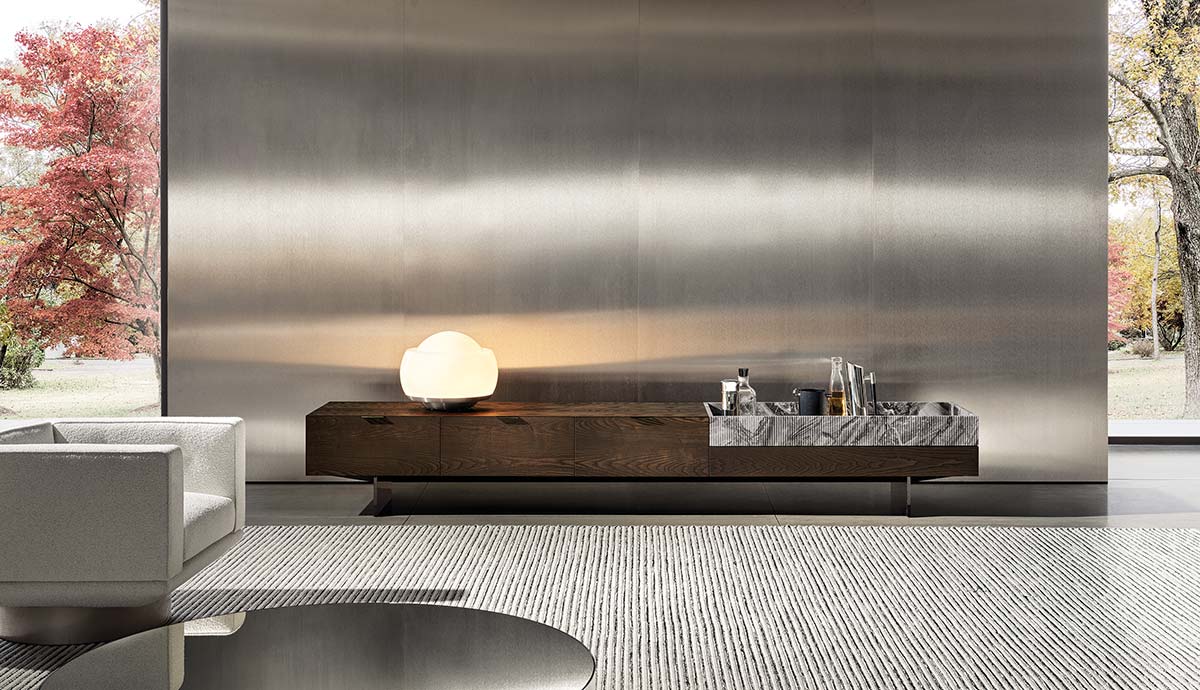
Superblocks by Minotti, design Marcio Kogan / studio mk27
Marcio Kogan, the architect who founded his mk27 studio in São Paulo, has designed Superblocks, a functional piece of furniture in which the modernist principles of Brazilian architecture are revived through a minimalist design. Conceived as a true piece of architecture, with the storage element in essence or glossy lacquer, the furniture is available in different finishes, rests on polished brandy metal blades, and is designed to integrate into different types of environments also thanks to versions and accessories that adapt to multiple and specific functions.
In living areas its storage unit can accommodate a brushed marble element with a strong identity in the top, designed for storing objects. While the refined leather cutlery tray is ideal for the dining areas, and the refined jewellery drawer with glass top for the sleeping area.
The contrast between the generous upholstered volumes and the lightness of the structure of the metal base on which they rest gives life to the Torii Bold family of chairs, which finds its evolution in open-air spaces with the Torii Nest Outdoor chairs, all designed by studio Nendo. Of the iconic Torii seating series, the Tori Bold version retains the morphology of the backrest while presenting a more solid and compact aesthetic. The backrest, with its slender thickness, is punctuated by vertical slat quilting and piping, in faux leather or econabuk, that outlines the perimeter of the upholstery: sartorial details that emphasise the couture aspect of the workmanship.
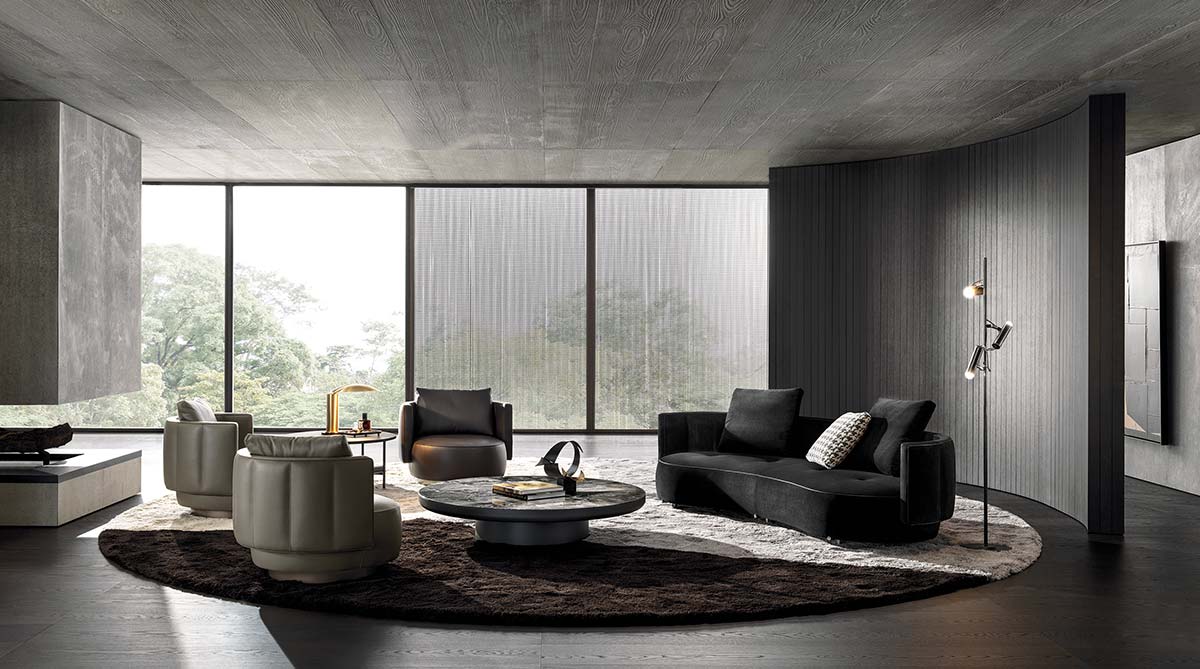
Torii Bold by Minotti, design Nendo
The feet, embellished with a small jewelled button, preserve the play of joints between vertical and horizontal elements inspired by the construction details typical of the Japanese tradition, from which the family takes its name, and accommodate the upholstered volume of sofas and armchairs: a sofa, proposed in small and large sizes, and in the peninsula variant; a fixed or swivel armchair; and poufs, in different shapes and sizes.

